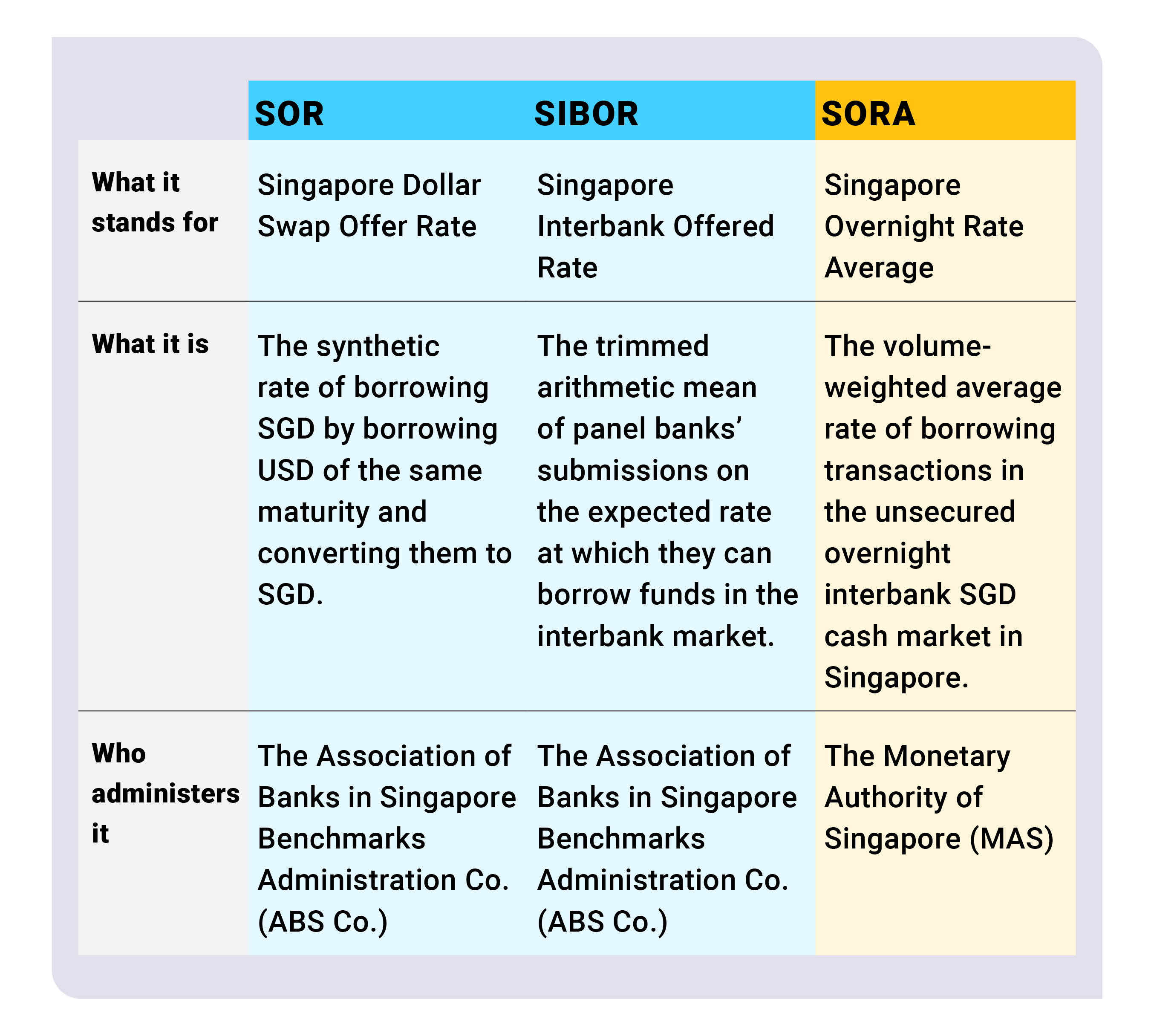BRANDED CONTENT
Why SORA is a more transparent and reliable borrowing rate for commercial property loans
Fully backed by overnight transactions between banks in Singapore, SORA is a more robust interest rate benchmark than SOR and SIBOR

The transition to SORA impacts not just floating-rate loans and mortgages, but also any financial contract tied to SOR or SIBOR, including bonds and derivatives. PHOTO: GETTY IMAGES
Follow topic:
Mike*, a business owner, will soon have to sign a new commercial property loan agreement for his factory building in the western part of Singapore.
He plans to replace his current commercial property loan, which is pegged to the Singapore Dollar Swap Offer Rate (SOR), with a new floating-rate loan based on the Singapore Overnight Rate Average (SORA).
While some of his fellow business owners expressed concerns about taking a new property loan agreement on a borrowing rate they did not know much about, Mike regards SORA as a reliable interest rate benchmark. He understands how SORA is calculated, having renewed his company's credit line earlier this year to replace an older floating-rate agreement that was expiring.
Mike is one of many commercial property owners who will be affected as Singapore transits to using SORA as the key interest rate benchmark. The transition impacts not just floating-rate loans and mortgages, but also any financial contract tied to SOR or the Singapore Interbank Offered Rate (SIBOR), including bonds and derivatives (such as currency and interest rate swaps).
What are SOR, SIBOR and SORA, and how are they different?

Ensuring a seamless transition
In the coming months, borrowers will need to switch out of their SOR-based loans. This is because SOR will be discontinued immediately after June 30, 2023, when the US dollar (USD) London Interbank Offered Rate (LIBOR) - a key component used in the calculation of SOR - is no longer available.
Borrowers with SIBOR-based loans will also need to switch out in due course as the widely used one-month and three-month SIBOR will no longer be published after December 31, 2024.
Since May 1, 2021, banks in Singapore have stopped referencing SOR in new loans and securities maturing after end 2021. Banks have also stopped issuing new SIBOR-based loans from October 1, 2021.
As SOR will be discontinued at an earlier date, banks are working to transition customers with existing SOR-based loans first. The approach for converting SIBOR-based loans is in the works, and further details will be made public in due course.

The switch to SORA is in line with global reforms to improve the robustness and integrity of financial benchmarks. Mrs Ong-Ang Ai Boon, director of The Association of Banks in Singapore (ABS), says that banks in Singapore have been preparing over the past two years to ensure a smooth transition to SORA for all customers.
"There has been a strong increase in the take-up rate of SORA financial products across wholesale and retail markets in recent months, reflecting customers' increased confidence in using SORA. We expect this trend to further accelerate in the coming quarter after banks stop offering new SIBOR loans, and stop using SOR in new derivatives from October 1, 2021."
Converting your SOR-based commercial property loan to SORA
When Mike switches from his existing SOR-based commercial property loan to one pegged to SORA, an adjustment spread will need to be added to his loan package to reflect the difference between SOR and SORA. This adjustment spread is necessary as SOR factors in term and credit risks while SORA does not.
Note: The all-in rate for SORA-based loans may differ slightly from that of SOR-based loans after conversion, depending on movement of compounded SORA.
Historically, the three-month Compounded SORA tends to be lower than the three-month SOR (see chart below). Data from the past five years showed that the three-month Compounded SORA, which is commonly used in mortgage loans, has been on average about 30 basis points, or 0.3 percentage points, lower than the three-month SOR.
Three-month SOR vs three-month Compounded SORA: A historical comparison
Therefore, there is a need to apply an adjustment spread to account for term and credit risks. Mike should work closely with the bank to understand how the adjustment spread is determined.
Options for commercial borrowers
Commercial borrowers with existing SOR-based property loans can either switch their mortgages to reference SORA, or take up other loan packages currently offered by their bank, including fixed-rate loans or loans pegged to other reference points such as fixed deposit rates or board rates.
Singapore banks are aiming to convert all corporate SOR exposures by December 31, 2022, so as to avoid any potential disruptions for affected borrowers once SOR ceases.
While 2023 may seem a long way off, borrowers are strongly encouraged to contact their banks early to understand their options for switching to alternative loan packages.
Says Mrs Ong-Ang: "Given that the transition is inevitable, we encourage borrowers to explore their options early and contact their banks sooner rather than later. This will allow borrowers to make an informed decision for a smooth transition."
Click here to learn more about SORA and get the latest updates on Singapore's interest rate benchmarks.
5 things you need to know about SORA
SORA will replace SOR and SIBOR in due course (see detailed timeline below).
This industry-wide transition impacts not just retail loans and mortgages, but also commercial loans, corporate bonds and derivatives, among many other financial products.
SORA is a transparent, robust and reliable interest rate benchmark that is fully backed by overnight transactions between banks.
Banks typically offer SORA loan packages using compounded SORA rates. Interest payments based on compounded SORA rates tend to be less volatile, because these rates are averaged out over a period of time. This enables borrowers to benefit from more predictable loan servicing costs from month to month.
Apart from converting to a SORA-based loan, commercial borrowers with existing SOR-based loans can also choose to take up other loan packages currently offered by their bank, including fixed-rate loans or loans pegged to other reference points such as fixed deposit rates or board rates.
Timeline of events
Apr 30, 2021: Banks ceased usage of SOR in new loans and securities.
Sept 30, 2021: Banks ceased usage of SIBOR in new contracts and SOR in new derivatives (with exceptions).
Oct 31, 2022: Banks to convert all SOR-based property loans to alternative packages.
Dec 31, 2022: All other SOR contracts to be converted to SORA, or to include robust contractual fallbacks.
June 30, 2023: Discontinuation of SOR.
Dec 31, 2024: Discontinuation of SIBOR.
Glossary of terms
Term risk: The additional payment to compensate for uncertainty over how interest rates may move over a future period of time.
Credit risk: The additional payment to compensate for default risk faced by the bank.
Loan margin: A fixed rate predetermined by the lender and added to the interest rate benchmark to compute the all-in interest rate charged on the loan.
*Mike is a persona drawn up based on common concerns of business owners.
Source: ABS
This is the third of a four-part series on the banking industry's transition to SORA, the new interest rate benchmark in Singapore.


